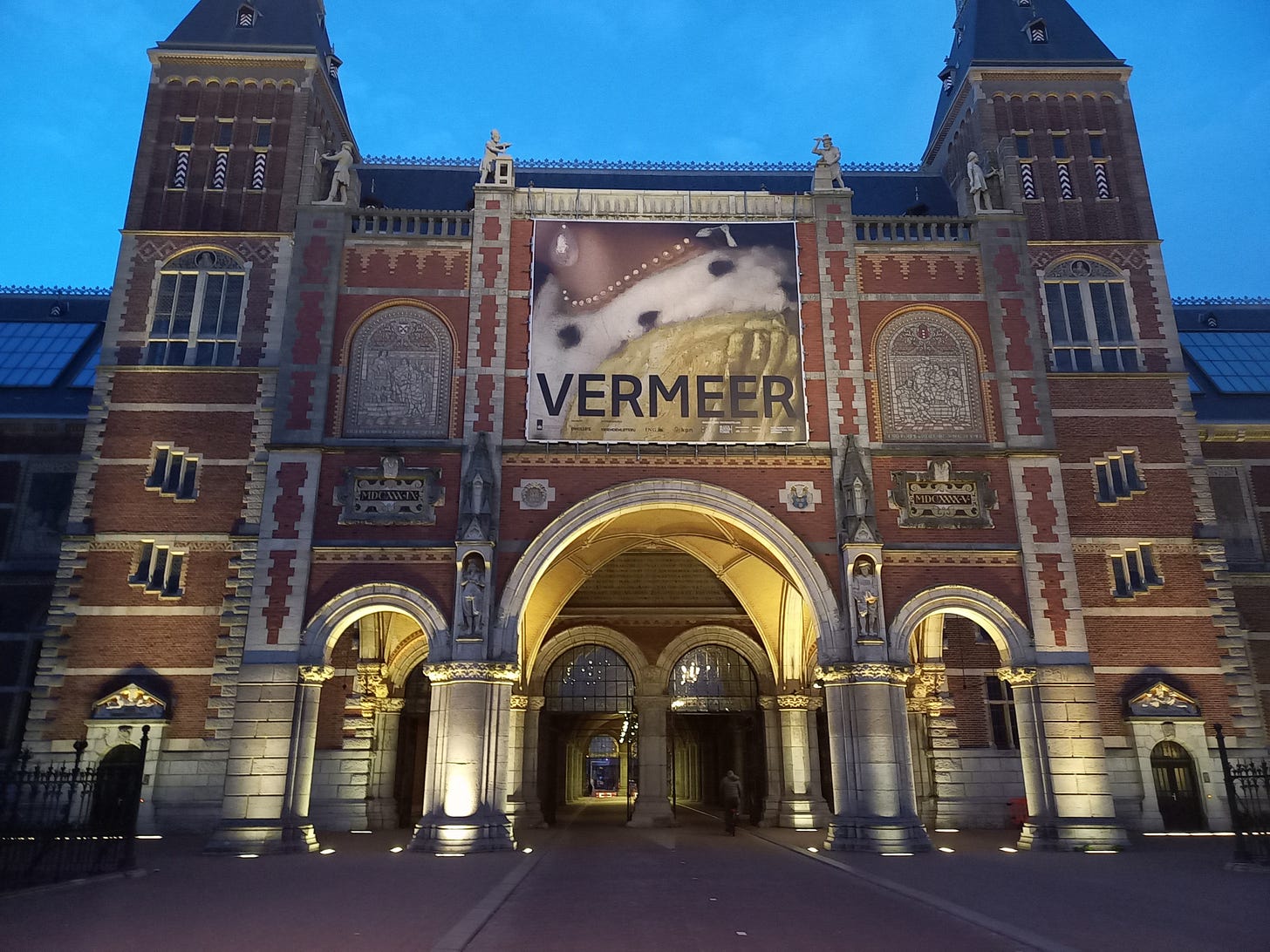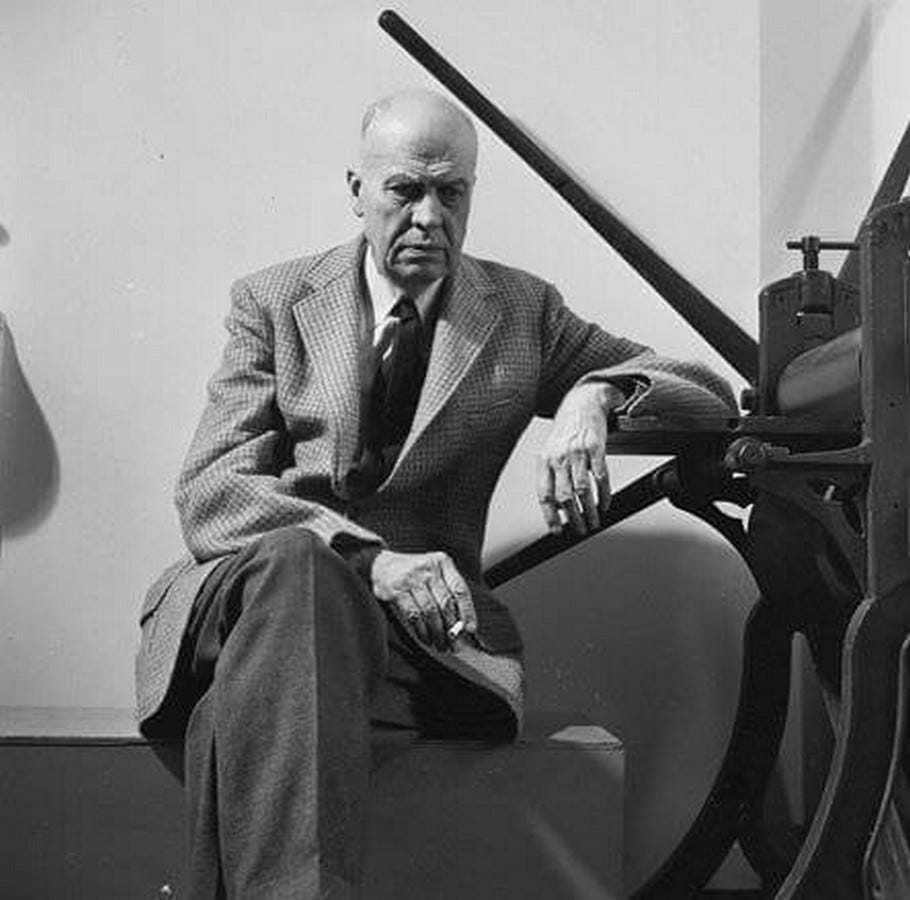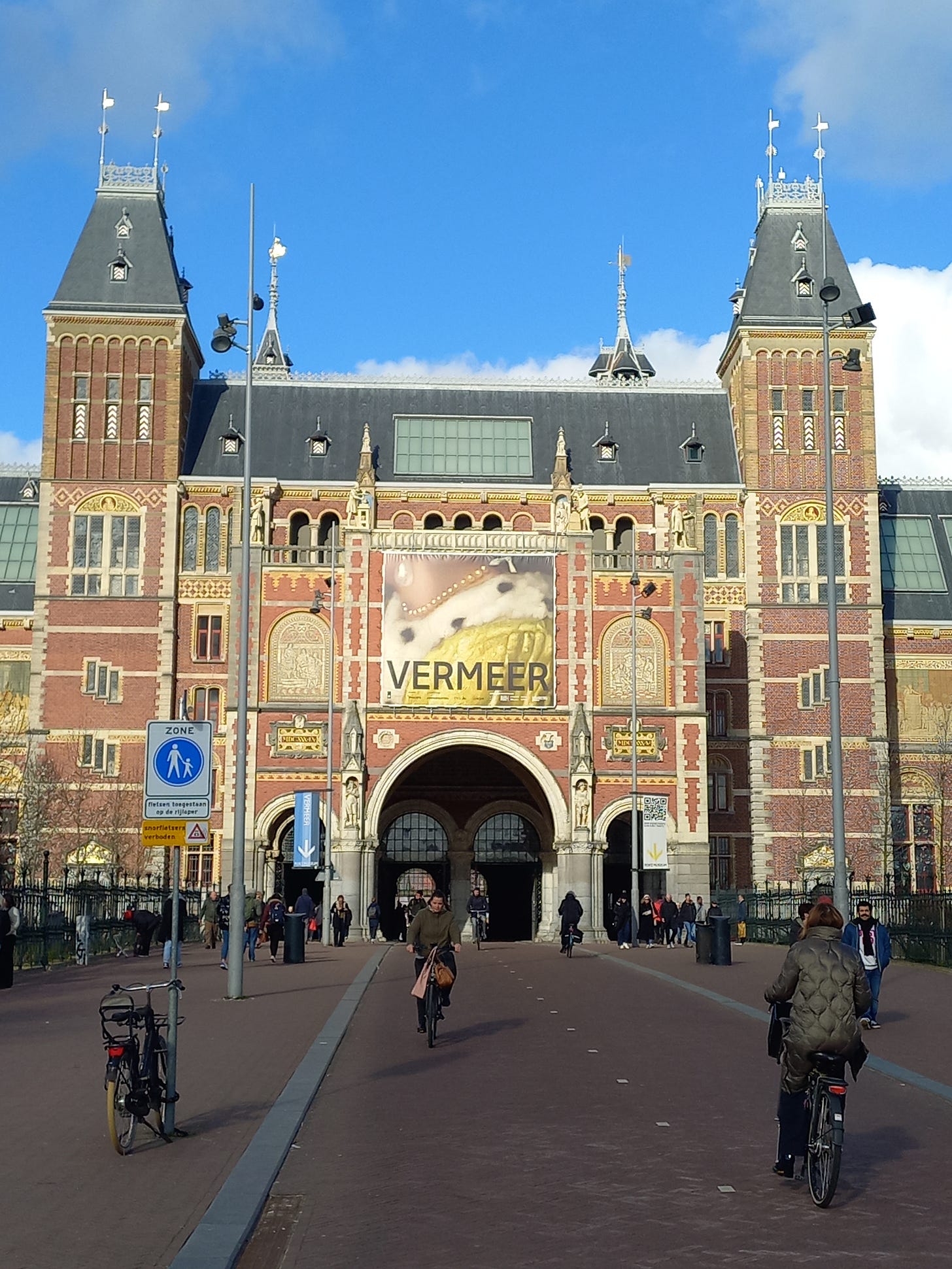Timeless Dialogues: Vermeer's Mysteries and Hopper's Intimacy Across Centuries and Continents
Exploring the influence of Vermeer's art on Edward Hopper: Tracing the Threads of Inspiration across Centuries and Canvases
Rijksmuseum and Vermeer Photo Credit: Nenad Georgievski
"Vintage Cafe" is a reader-supported newsletter tailored for curious readers. Receive reviews and recommendations on books and music, travel journals, writing tips, as well as art and coffee that will leave you feeling enriched. Authored by Nenad Georgievski.
The world of art is a treasure trove of examples where artists draw inspiration from their predecessors, creating a rich tapestry of influences, inspirations, and creative dialogues that transcend time and space. One such fascinating instance is the profound impact that Johannes Vermeer, the renowned 17th-century Dutch painter, had on the artistry of Edward Hopper, an iconic figure in 20th-century American art. Their connection is marked by a profound artistic resonance, bridging the centuries-long gap between Vermeer's Dutch mastery and Hopper's American vision.
Despite the temporal and geographical distance that separates Vermeer and Hopper, their artistic approaches reveal intriguing similarities. Both artists skillfully captured figures in contemplative states, caught in private moments that beckon viewers to ponder their emotions and thoughts. Vermeer's use of the camera obscura to achieve glimpse-like compositions aligns with Hopper's fascination for fleeting views from elevated trains, both seeking to grasp the transient and fragmentary aspects of life.
Edward Hopper
Edward Hopper, the masterful American artist, delved deeply into the theme of aloneness, often portraying individuals in austere settings. While Hopper is typically labeled a realist, a closer examination reveals him as a Symbolist, infusing objective appearances with poignant subjectivity.
His paintings, characterized by a play of light and shadow, convey complex emotions without overtly expressing them. Timeless and uncanny, Hopper's works leave viewers in a state of contemplation and solitude.
In contrast, Johannes Vermeer also explored the theme of aloneness, but within a different aesthetic and cultural context. His paintings often featured women in domestic settings, engrossed in solitary activities like reading letters or playing musical instruments. Vermeer's meticulous attention to detail and masterful use of light created an intimate and introspective atmosphere in his works.
The significance of Hopper's use of light diverges from Vermeer's symbolism. Vermeer's light often symbolizes warmth and life, while Hopper's cold and sterile light underscores isolation and detachment. This reversal of Vermeer's symbolism reflects Hopper's exploration of the consequences of Puritan ideals and societal repression on the American psyche.
This article delves into the unique dynamics of their artistic dialogue, showcasing how Vermeer's legacy enriched Hopper's work, forging a profound and enduring relationship. We explore the captivating connection between Vermeer's artistry and Hopper's evocative works, delving into the thematic and stylistic parallels that define their exceptional artistic visions.
Brushes with Time: Visiting and Exploring Hopper's New York and Unraveling Vermeer's Enigma at Iconic Museums
Rijksmuseum Photo Credit: Nenad Georgievski
In the years 2022 and 2023, I had the privilege of immersing myself in the grand exhibitions of two iconic artists: Edward Hopper's New York at the Whitney Museum of American Art and Vermeer's mesmerizing collection at the renowned Rijksmuseum in Amsterdam. These exhibitions brought together the enigmatic works of two artists who, despite the vast temporal distance, shared a profound ability to capture introspective moments filled with the promise of revelation.
Keep reading with a 7-day free trial
Subscribe to Vintage Cafe to keep reading this post and get 7 days of free access to the full post archives.









